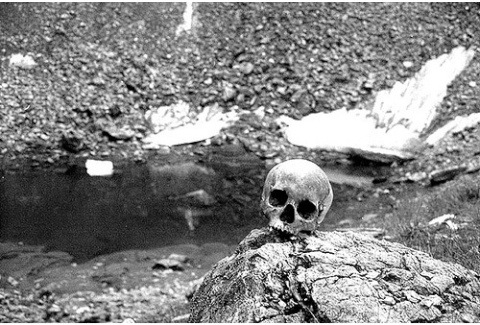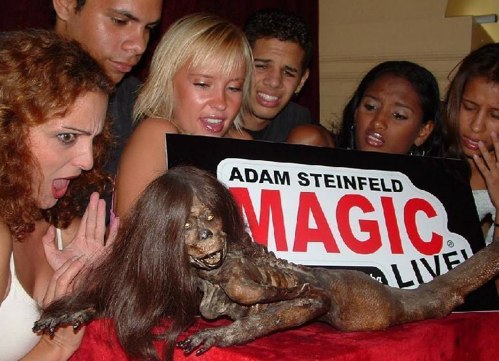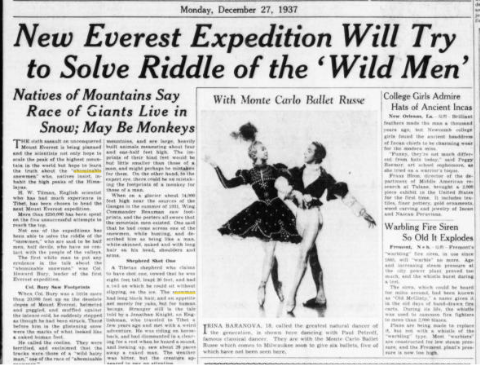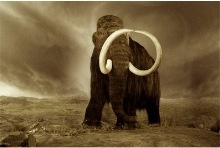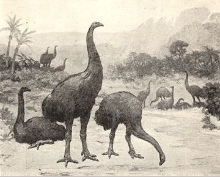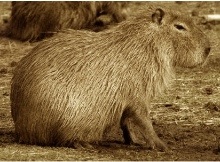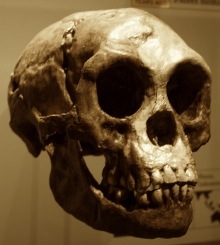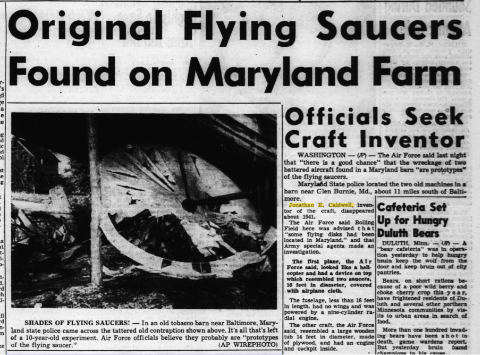Is There a Lost Race of Ape-Men?
Tuesday, October 20th, 2009 In the Michael Crichton book Congo and movie by the same name, he describes a race of super-apes almost on par with man in intelligence. Like much of Crichton’s work, he based this on science speculation. For thousands of years there have been stories of ape-men that fell outside our conventional definitions of humans, gorillas, chimps and orangutan.
In the Michael Crichton book Congo and movie by the same name, he describes a race of super-apes almost on par with man in intelligence. Like much of Crichton’s work, he based this on science speculation. For thousands of years there have been stories of ape-men that fell outside our conventional definitions of humans, gorillas, chimps and orangutan.
In 500 BC, Hanno the Navigator, a Carthaginian explorer described this encounter off the Western coast of Africa:
At the terminus of Hanno’s voyage the explorer found an island heavily populated with what were described as hirsute and savage people. Attempts to capture the males failed, but three of the females were taken. These were so vicious they were killed, and their skins preserved for transport home to Carthage.
The name the intrepreters gave for them was “gorillae”. 2,000 years later explorers would use that word to describe modern day gorillas. But were they gorillas? Hanno described finding these “savage people” in a place far from where gorillas are known to inhabit (the historical version of the story is in Greek and not Hanno’s native Punic, suggesting it’s been repeatedly rewritten). Taking it at face value, it could be that Hanno found an isolated group of gorillas that went extinct. But if it was a distinct population of gorillas on that island, it’s very likely it was a unique species of gorilla with its own behaviors and characteristics (gorillas are now divided into two distinct species with two subspecies each).
By 1847, after the gorilla had been discovered by the West, we had a clearer picture of the major ape species: Humans, chimpanzees, gorillas and orangutan. But since then stories of other species have persisted.
The 19th Century French-American explorer Paul du Chaillu described a species of ape whose behavior doesn’t quite describe what we know about chimpanzees or gorillas.
This ape, whose singular cry distinguishes at once from all its cougeners in these wilds, is remarkable, as bearing a closer resemblance to man than any other ape yet known. It is very rare and I was able to obtain but one specimen of it. The face is bare and black. the forehead is higher than any other ape, and the cranial capacity greater by measurement. The eyes are wider apart than any other ape. The nose is flat. The cheek bones are high and prominent, and the cheek sunken and lank. The sides of the face are covered with a growth of straight hair, which meeting under the chin like the human whiskers, gives the face a remarkably human look. The arms reach below the knee. The ears are very larger, and are more nearly like the human ear than those of other apes.
Saying that it was a “gorilla” or a “chimpanzee” isn’t as helpful of a classification as we might think. Natural history museums are filled with interesting specimens that push the boundaries of gorilla and chimpanzee taxonomy, but are still within those boundaries. A skull and a DNA test can tell us something about how a creature lived, but not the whole picture. A modern day Dane and a pygmy bushmen look about as different as you could imagine, but genetically they’re the same species.
Science encounters a lost race of apes
The idea that of a living chimpanzee or gorilla species with much different physical and behavioral traits (like the gorillas in Congo) got a big boost from the scientific community when credible reports began emerging from the Congo of a large ape that displayed both chimp and gorilla like behavior.
Shelley Williams PhD, a specialist in primate behavior had this encounter with the “Bili Apes” in the Congo: From Wikipedia
“We could hear them in the trees, about 10 m away, and four suddenly came rushing through the brush towards me. If this had been a mock charge they would have been screaming to intimidate us. These guys were quiet, and they were huge. They were coming in for the kill – but as soon as they saw my face they stopped and disappeared.”
Williams continues:
“The unique characteristics they exhibit just don’t fit into the other groups of apes,” says Williams. The apes, she argues, could be a new species unknown to science, a new subspecies of chimpanzee, or a hybrid of the gorilla and the chimp. “At the very least, we have a unique, isolated chimp culture that’s unlike any that’s been studied,”.
Genetically, evidence indicates the Bili Apes are identical with known chimpanzees. But there’s more to physiology and behavior than what’s encoded in the genes. While there are conflicting reports about the physical traits of the Bili Apes, the consensus is that they are larger than common chimps and much bolder.
Presently they are threatened by bush meat hunters and gold miners who are encroaching into their habitat.
Conclusion
With the verification that there is indeed a Bili Ape that has its own distinct behavior and appearance, it’s a reasonable hypothesis that there have been other species and sub-species of chimpanzee and gorilla in historic times with their own particular behavior and physiology that have since gone extinct.
That some of these were smart or closer to humans in behavior is not an unreasonable speculation. Given the friction that exists today between humans in the region and other humans as well as primates, it’s not hard to imagine their extinction being at least human influenced.
So if there was a race of super-apes, chances are we killed them. It’s the Planet of the Apes in reverse…
Bili Ape – Wikipedia, the free encyclopedia
From myth to reality – meet the chimps who eat lions
 Welcome to the Weird Things podcast featuring Andrew Mayne, Brian Brushwood and Justin Robert Young.
Welcome to the Weird Things podcast featuring Andrew Mayne, Brian Brushwood and Justin Robert Young.
